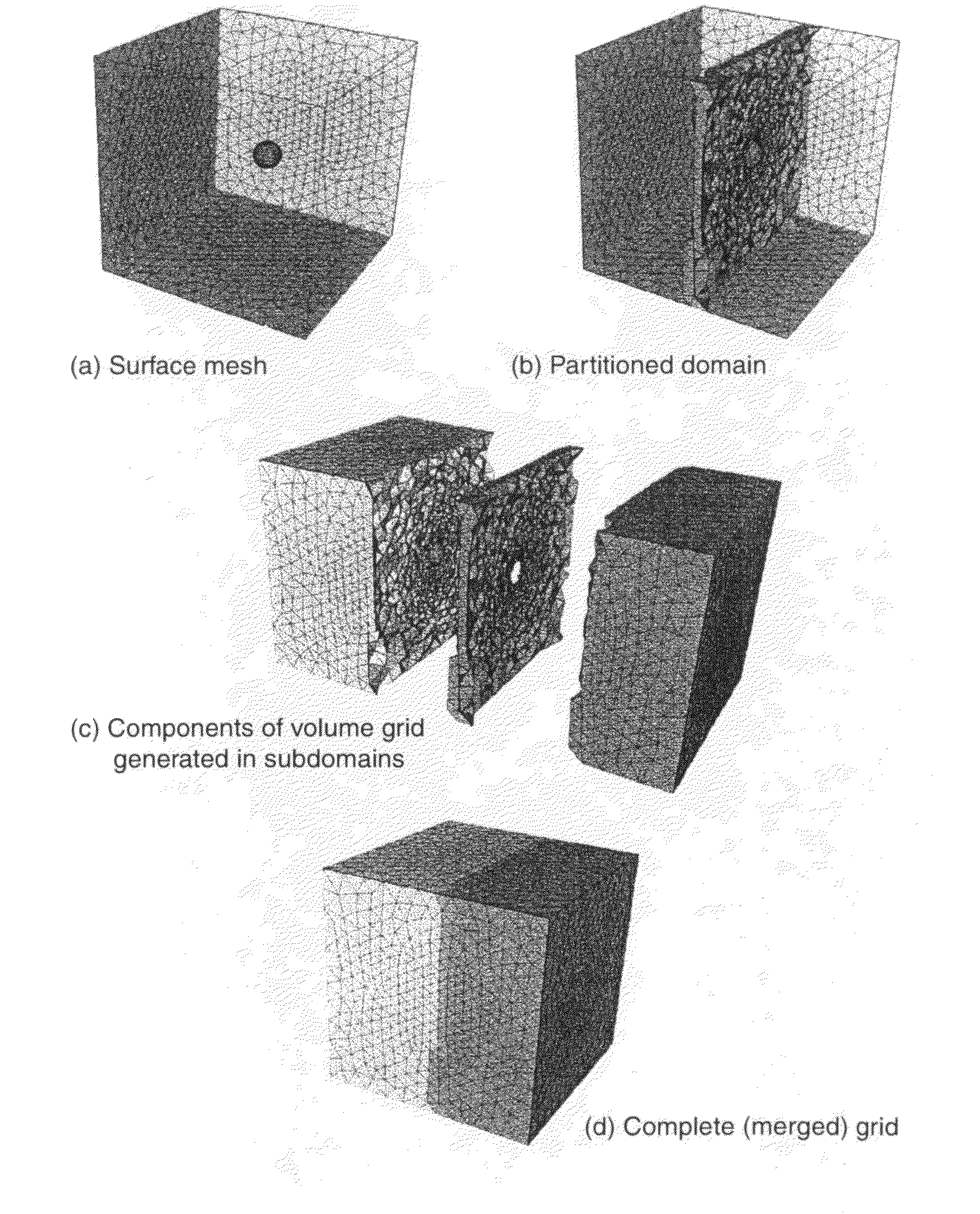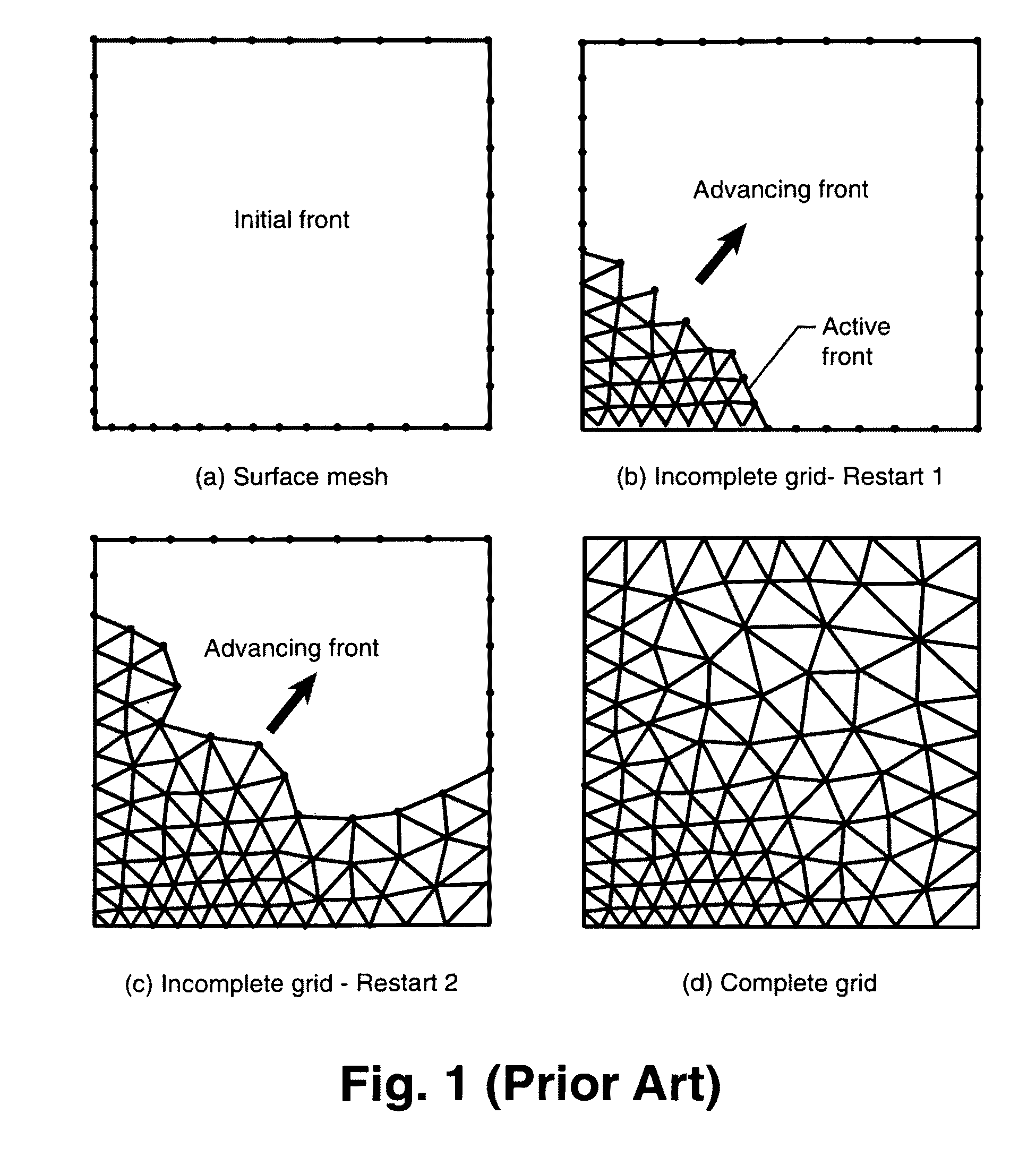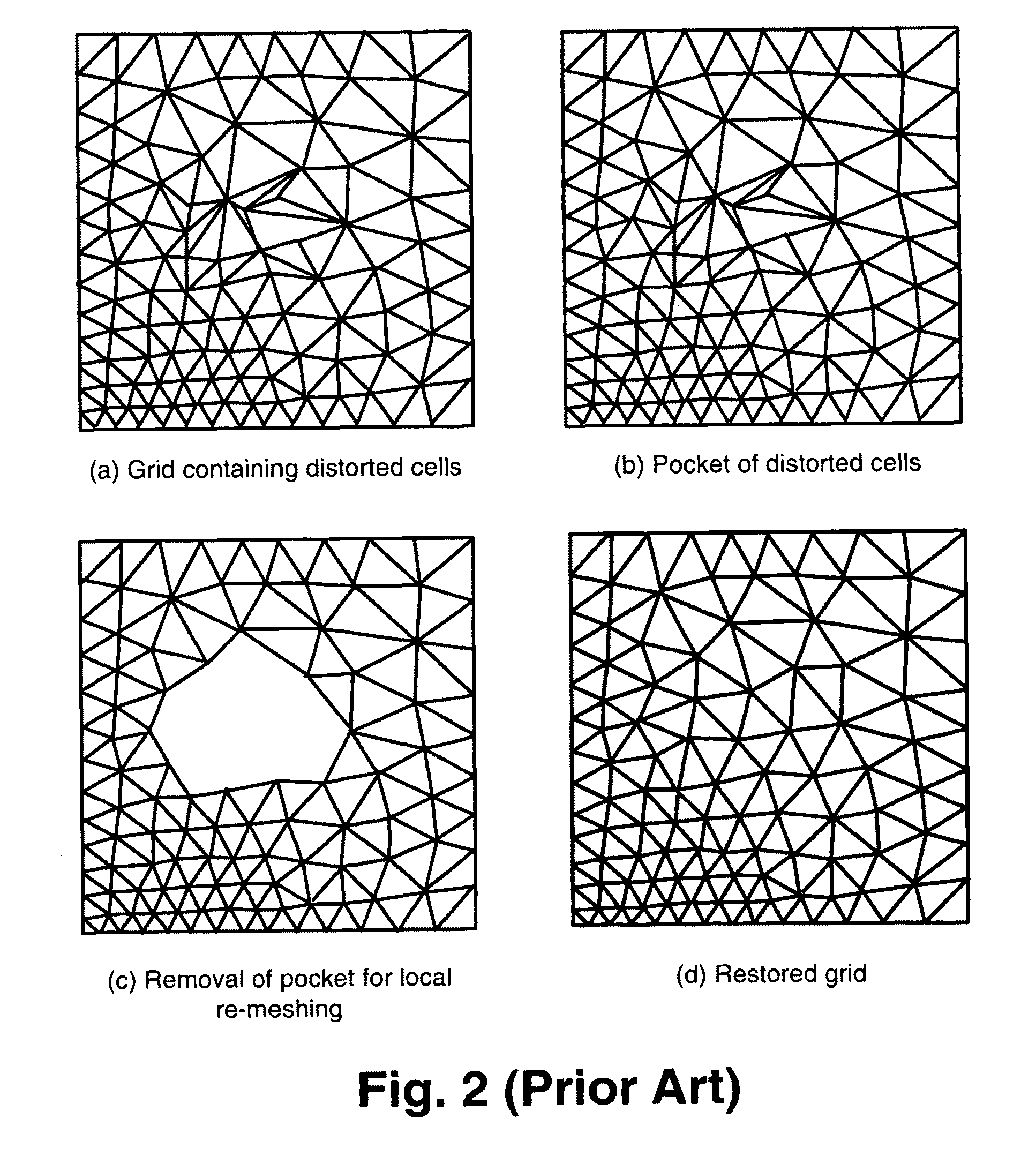Domain decomposition by the advancing-partition method for parallel unstructured grid generation
a grid generation and domain decomposition technology, applied in the field of computational fluid dynamics, can solve the problems of increasing the difficulty of generating ns grids with minuscule length scales in very large domains, requiring considerable computational resources, and large grids of large siz
- Summary
- Abstract
- Description
- Claims
- Application Information
AI Technical Summary
Benefits of technology
Problems solved by technology
Method used
Image
Examples
Embodiment Construction
[0024]The present method and system of domain decomposition is an extension of the meshing methodology incorporated in the grid generation software VGRID and is preferably described by first presenting the underlying grid techniques followed by their implementation for domain decomposition. The following symbols are used herein in describing embodiments of the invention:[0025]A cell aspect ratio[0026]gj{1, 2, 3, . . . mj} jth partition-grid containing a set of mj field elements[0027]Gi{1, 2, 3, . . . mi} ith sub-grid containing a set of mi field elements in subdomain i[0028]G{1, 2, 3, . . . mG} global grid containing a set of mG field elements in the main domain[0029]k empirical parameter used for computing the center of mesh density[0030]L level of binary domain partitioning / decomposition[0031]mi mass of ith the particle; also number of grid elements[0032]N total number of subdomains / sub-grids[0033]nG number of surface mesh elements[0034]n number of particles; number of boundary gr...
PUM
 Login to View More
Login to View More Abstract
Description
Claims
Application Information
 Login to View More
Login to View More - R&D
- Intellectual Property
- Life Sciences
- Materials
- Tech Scout
- Unparalleled Data Quality
- Higher Quality Content
- 60% Fewer Hallucinations
Browse by: Latest US Patents, China's latest patents, Technical Efficacy Thesaurus, Application Domain, Technology Topic, Popular Technical Reports.
© 2025 PatSnap. All rights reserved.Legal|Privacy policy|Modern Slavery Act Transparency Statement|Sitemap|About US| Contact US: help@patsnap.com



